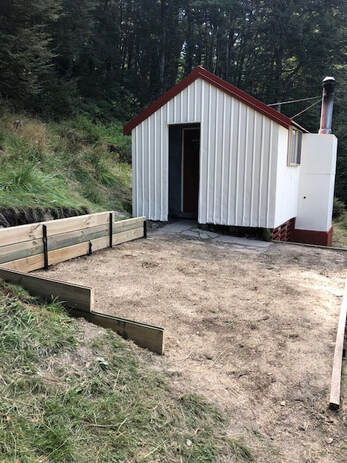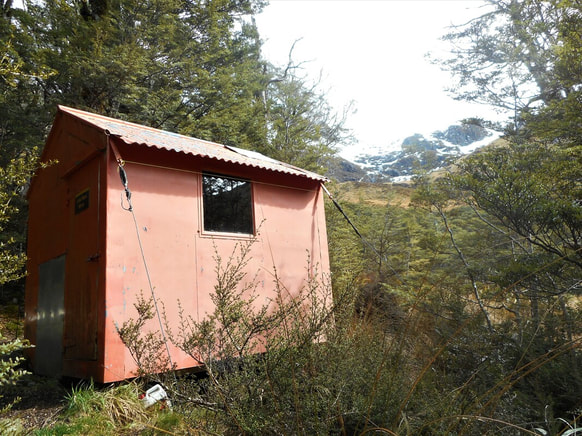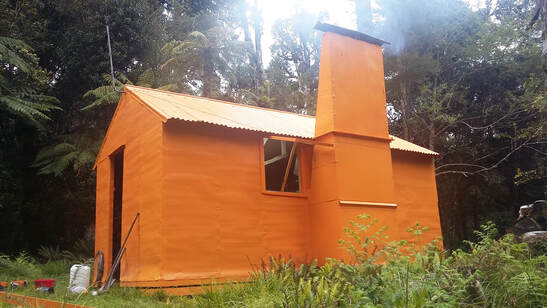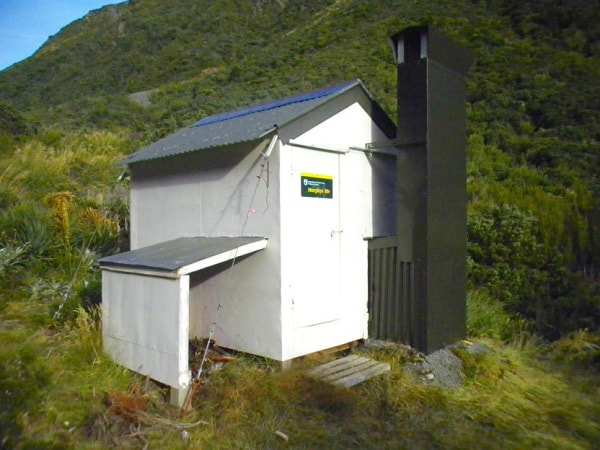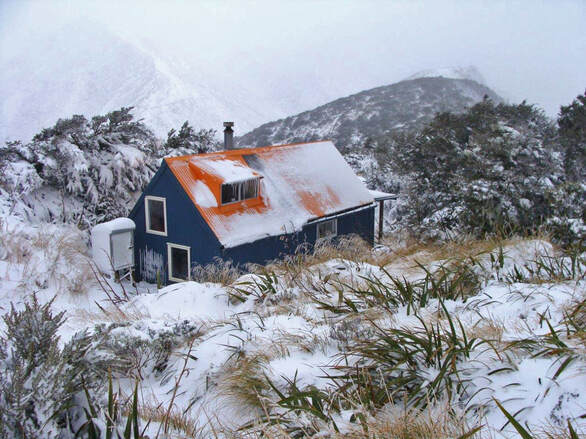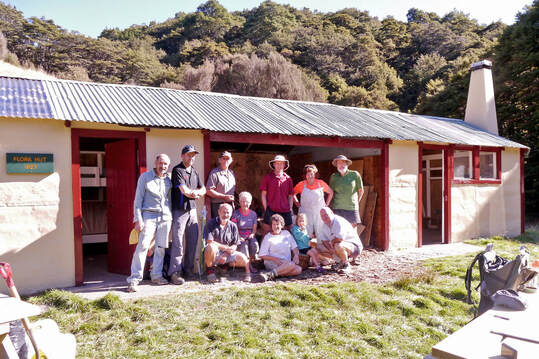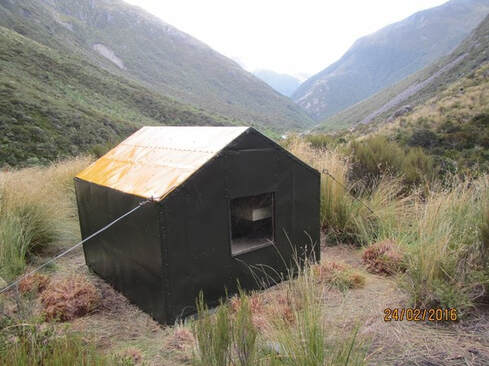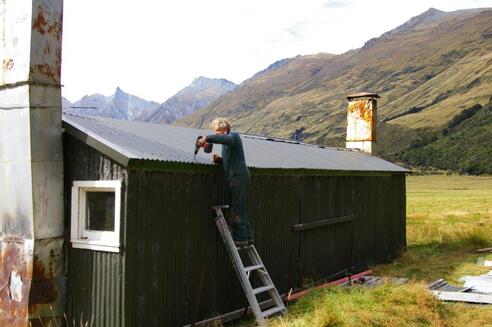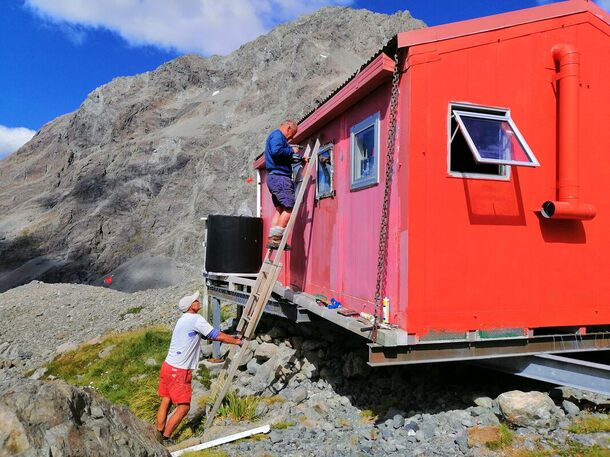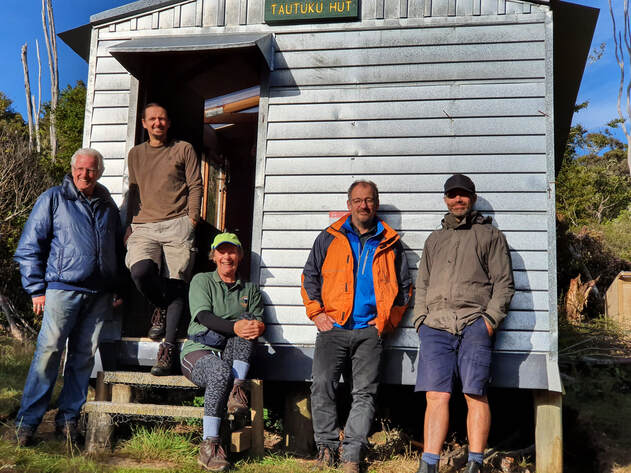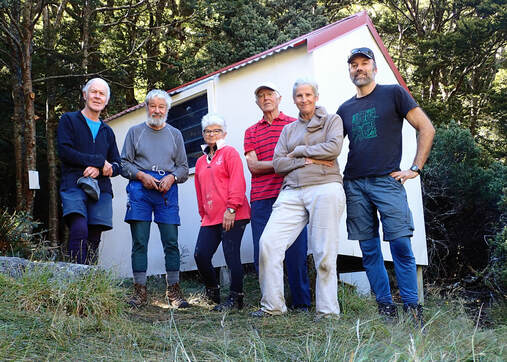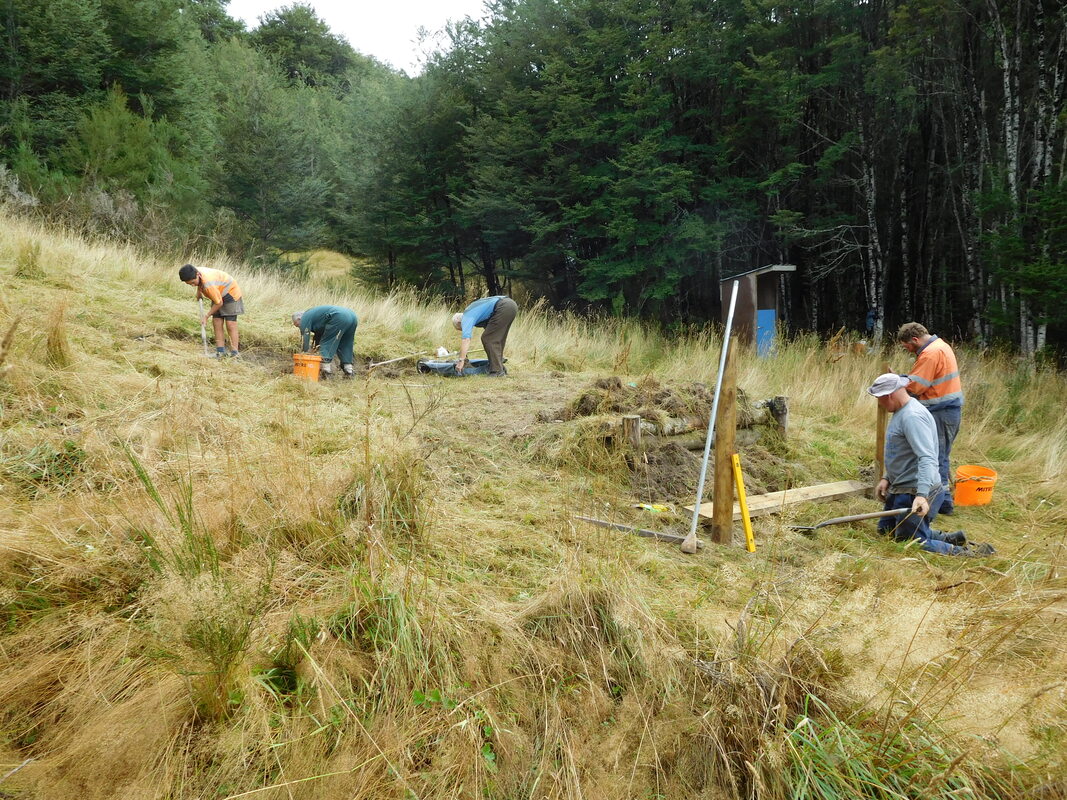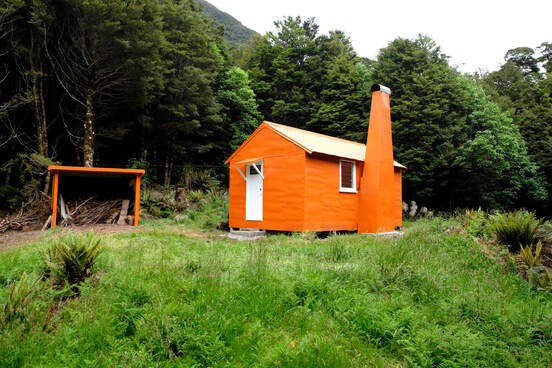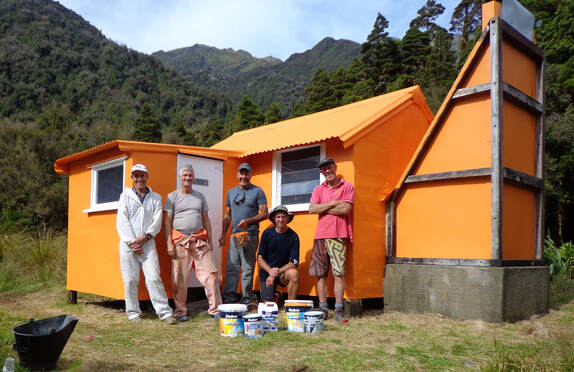|
Built in 1968, Monument Hut is a tidy S70 6 bunk hut built by the NZFS in the Hopkins Valley. The New Zealand Forest Service had a great vision for opening up recreation in this valley pre-DOC with 2WD access formerly maintained up to Monument Hut. This opened up a huge area of backcountry ideal for family tramping, hunting and climbing. Over time the weather has chipped away at the road and it is now only suitable for competent 4WD vehicles. Without a 4WD many users will park at Ram Hill carpark and walk, or mountain bike, up to Monument Hut. A great little first stop on any adventure through the Hopkins Valley, or lunch break on the way to Red Hut, Huxley Forks or Dasler Biv. The area is also open to 4WD adventures up to the NZAC owned Elcho Hut.
Lake Man Biv was built in 1968 by the NZFS and is a 2-3 day round trip between the Doubtful and Hope valleys, located in the Lewis Pass area. Sometime in the early 2000s the original open fire place was removed leaving this less attractive as a winter destination, but still welcome shelter for most times of the year.
Apart from this modification, the biv had not had regular maintenance for 20 years before Peter Alspach applied for funds from the Backcountry Trust in Round 6. An assessment trip was undertaken in September 2017 to get an idea of the work needed on the biv. Built in 1962, Mid Waiohine Hut in Tararua Forest Park has long been managed as an original S70 6-bunk hut with it's as-built features intact. Grant Timlin applied for a grant in Round 4 for the exNZFS to replace the ageing roof on the hut.
Murphy’s Biv is one of a group of huts accessible up the Havelock Valley, and is a 1.5hr walk up Murphy’s Stream from the Havelock River. This standard S186 biv was built in 1965 and is a favored base for hunters, particularly in early winter for the early winter Himalayan Tahr season. Unfortunately the chimney had sustained some severe wind damage, in fact it had all but been completely flattened, leaving only the firebox base partially intact. Heating for this hut is integral to the hunting experience here so the decision was made to restore the open fire.
Mike Lagan of Geraldine applied for a small grant to do the work as part of Round 3 of the Outdoor Recreation Consortium funding. It would be the first of a number of projects Mike would take on in the local area. Howletts Hut is one of the most historic club huts in the country, and has served as welcome refuge for trampers and hunters for over 80 years. It's located in a snug location on Daphne Ridge in Ruahine Forest Park. The first hut to occupy the site was built by local botanist and school teacher William Howlett in 1893-4. Howlett's hut lasted until 1930, and was replaced by a second hut built by the Ruahine Tramping Club (RTC) in 1940, with help from the Heretaunga Tramping Club. After the RTC disestablished, the Heretaunga Tramping Club took over the hut, and undertook a major renovation in 1979-1980. Club members have lovingly maintained the hut ever since, and made several small upgrades over the years, but have largely retained its original shape and character.
The Nelson Tramping Club were one of the early organised tramping clubs to get involved with local hut renovations in their area utilising Outdoor Recreation Consortium Funding. The first project they decided to take on was the historic Flora Hut in Kahurangi National Park. Built in 1927, Flora Hut is one of only a couple of huts remaining with the distinctive two separate bunk rooms consistent with the social norms of the time. The hut was built by the Mt Balloon Scenic Reserve Board but by the 1970s had fallen into such disrepair that the New Zealand Forest Service decided to essentially completely rebuild it to the original design in 1972. By this the road end was quite close to Flora Hut and sadly it started to suffer from some vandalism by the end of the 1990s. At one stage removing the hut was considered, but the 2002 Recreational Opportunities Review saw a resurgence of support for retaining this hut as a key family entry level opportunity. In 2013 the Nelson Tramping Club decided to restore the hut in partnership with DOC Motueka.
Minchin Biv was one of the first full rebuilds of a S86 biv funded by the Outdoor Recreation Consortium back in February 2016. Built in 1958, Minchin Biv was one of the first bivs built to the new standard S86 design but its sad decline had been noticed over the past 20 years, punctuated by periodical inspections to record its continuing lack of water tightness. In the early days of the Outdoor Recreation Consortium, Roger Woods stepped in with a proposal to rebuild the biv and applied for funding in Round 3.
Located part way up the Matukituki Valley in Mt Aspiring National Park, Cascade Hut is one of the oldest club huts in the South Island. Built in 1932, the hut has two rooms with 4-bunks each which along with Flora Hut further north is one of a couple of huts still remaining whose design represents the social mores of the time. In the past few years maintenance had slipped behind on Cascade Hut with more of the focus being on the clubs 1949 Aspiring Hut just 15 minutes further up the valley.
The Canterbury Mountaineering Club (CMC) built the current Barker Hut in 1980 and this has served the outdoor community well as a base for climbing peaks in the area, as well as welcome shelter on some of the trans-alpine tramping trips in the area. The hut is the second hut on the site with the original hut being built in 1945.
Tautuku Hut is a converted Skyline garage built in 1991 in a clearing, in the Catlin Forest Park. It is reached in a pleasant 2-3 hour walk from the McLeans Falls carpark. Alastair Macdonald from Permolat Southland applied for some funding from the Round 11 grants for what would be the first round of maintenance for this remote hut in a long time. The group had tramped in earlier to recce the project and measure up what was needed. As part of this trip they cleared some bush around the hut to allow for more light on the hut, as well as cut a small track behind the hut and created a small clearing for a much needed toilet.
Back in 2018 the Upper Clutha Tramping Club kindly donated $1,000 to the Backcountry Trust towards the collective work and in the same letter said 'by the way, can you find a project for us?'. For sometime we had been trying to find a group to take on Top Hut in the Ahuriri Conservation Park. This small 2-person biv was built in 1966 but for the last 20 years had fallen off the maintenance schedule. It was a perfect fit for the size project the group wanted. The group flew in early in March 2019 and were joined by NZ Geographic roving reporter Kennedy Warne who was working on an article for the magazine on New Zealand's backcountry hut network.
In the week before the world went into Level 4 as a result of the Covid-19 crisis, Dave Hodder and five others flew in with Alpine Springs Helicopters to Tutu Hut. The trip had already been delayed by a month, but they managed to get in with enough tools and materials to finish the new helipad at the site. The day before they left they were advised that they would need to wear face masks and gloves on the flight, which they managed to find among their gear at home after they discovered that Bunnings had already sold out.
From the first days of the Outdoor Recreation Consortium, Backcountry Trust board member Geoff Spearpoint had taken on the maintenance of the remote NZFS huts in South Westland. These three S70 6-bunk huts were amongst the last built by the NZFS in the 1970s and over the last few years Geoff has led many groups in to this area to do the work on Tunnel Creek, Roaring Billy and Thomas River Huts.
Richard Shields contacted the Backcountry Trust back in February 2020 to say that he and some friends were visiting the South Island and were keen to pitch in as a group to do some volunteer work on a hut. His timing was perfect as we had just been starting to explore some 'paint a hut' projects for the South Island and this one was the perfect fit for their team.
|
Projects
June 2023
|

